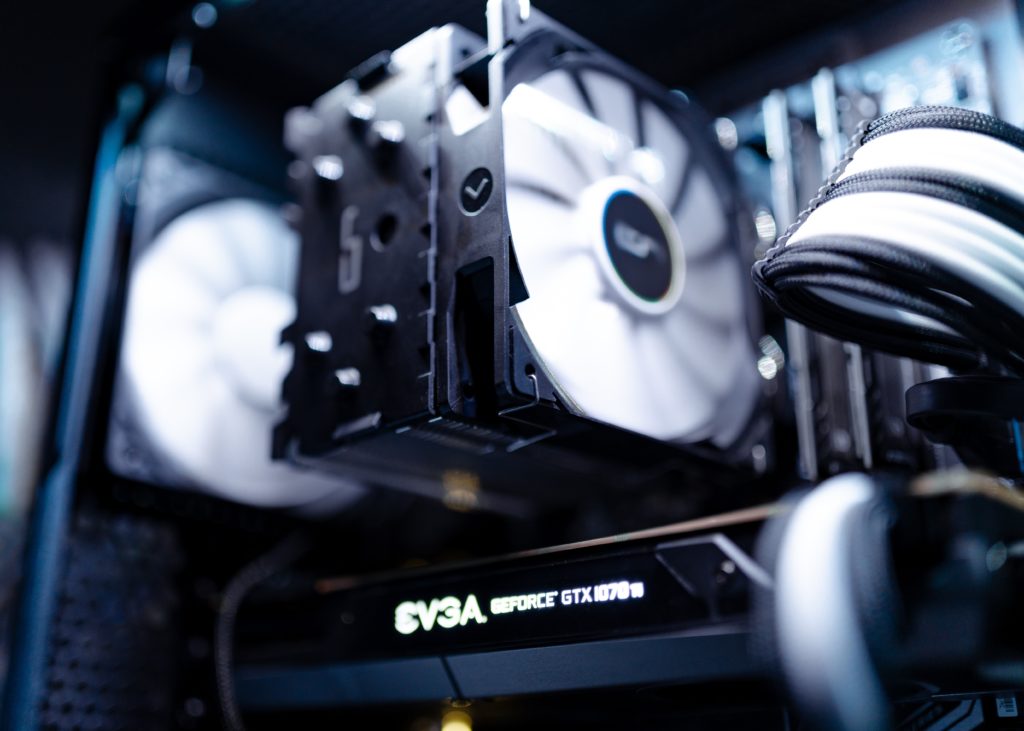
Why do computers make noise?
Noisy computers are a nuisance most people in the modern era are familiar with. Although not nearly as pressing a concern as construction noise or blasting sirens going up and down the streets all day long, it’s one that’s fairly relatable in today’s world of virtual workplaces.
The noise an average computer can produce might not be considered dangerous by standard sound measurements, but it also has an impact on our performance and our well-being, so if you ask me, computer noise is noise pollution as much as any other type of noise that interferes with our daily lives and activities.
As such it is a matter worth discussing.
Sound comfort is different depending on the situation and activity that is going on. In the context of the work environment, where one often needs to focus and concentrate, even relatively low noise can affect our performance, cause headaches and other health problems and overall frustrate us and prevent us from performing at our highest level.
What causes noise in computers?
The first thing we need to do is to understand why computers make noise. After all, other gadgets like tablets or smartphones don’t, so why do desktop computers and laptops?
There are two primary factors that cause computer noise.
Moving parts noise in computers
This seems fairly straightforward, an object moving will likely cause some amount of noise as it moves, but can show up in circumstances one wouldn’t normally think of.
Fans within a computer are obviously a primary culprit. This problem is also increasing, as our computers are more powerful every day, and processing power causes computers to reach higher temperatures, therefore making fans bigger and more powerful.
The main thing you need to do in order to minimize fan noise from your computer is to keep those fans clean. That means opening the computer up every few months and cleaning them with pressurized air and a delicate brush. Sometimes there is not much we can do to fix this, but the environment in which your computer lives contributes a lot to how quickly the fans get dirty. After all, fans circulate the air around them, so if you keep your computer in a dusty corner under the table… well, that’s not going to help.
If your fans are still bothering you even though they are clean, or even brand new, this video explains a few settings you can play with (on Windows) to help reduce that noise.
Simplifying a bit there, but this is the main reason why computers make noise and tablets and smartphones don’t. As amazing as it is that the smartphone we carry in our pocket can do all the stuff it does, it is not nearly as powerful as the most basic laptop or desktop computer, and therefore doesn’t heat as much.
But fans are not the only reason why computers make noise. There are other components that have some form of moving part that also adds to the noise.
HHD hard disk drives, for example, have small circular plates within them that are rotated as data is written onto and read from the disk.
Fan noise is more of a continuous buzz, whereas hard disk drive noise is more mechanic noise that only appears at intervals (when the HD is working).
Coil whine noise in computers
The other type of noise computers make is coil whine noise. this is an interesting result of the relationship between energy and sound.
Whenever current passes through a wire, the energy causes the wire to vibrate very slightly. Normally these vibrations aren’t at a resonant frequency, meaning that there isn’t an associated audible noise. Sometimes though, components that pass a large amount of energy, particularly through inductors, can end up creating resonant frequencies and noise proportional to how much energy is passed through them.
These types of components include power supplies and graphics cards, and although they don’t usually add up to very much noise, the push for more powerful hardware also means an increase in energy passed through each component. And this increase in energy means that coil whine is becoming an increasingly noticeable addition to already noticeable noise.
If you want to learn more about computer coil whine noise, this video explains it perfectly and also shows a bunch of examples you can use to determine if the noise your computer is making is actually caused by coil whine or something else.
How does computer noise impact workflow?
The types of droning, unending noise associated with computers have long been correlated with a decrease in work productivity. Studies such as this one from Hong Kong Polytechnic indicate that noise in a workplace not only decreases productivity, but can also entirely distract workers who already have decreased workplace productivity.
Although any sort of unwanted ongoing noise is known to be disruptive to a workplace setting, continuous unchanging noises, like the HVACs cited in the paper, are known to be particularly disruptive. Computers, through both forms of noise, fit into this category, and can be a massive concern considering their prevalence in the modern workplace.
Furthermore, studies have also shown that the type of noise produced by computers is one that can’t really be adjusted around. This paper from the University of Nebraska runs a similar experiment to the previous one, but instead analyzes long-term productivity to see if workers were able to eventually acclimate to noise sources like HVACs. Although the test subjects did eventually notice the sound less after some amount of time had passed, there was not a notable change in performance after this point. This means that even after you’ve “gotten used” to noise from something like a computer, it still has some amount of impact on your workplace performance.
It should be noted that both of these examples use much louder noises, like conversations or HVACs, than a computer should generally be producing. But considering they both incorporate similar types of noise to that created by a computer, and would still have a notable impact even if scaled down, workplace productivity is certainly impacted by the presence of a noisy computer.
How is computer noise being mitigated?
The most important lesson that can be learned from noise reduction in the computer industry is that it’s an endeavor that doesn’t need to be undertaken for its own sake.
Creating noise requires energy to be wasted in some way, so the natural progression of energy efficiency generally also leads to a reduction in noise.
The advancement in storage hardware is a good example of this. The earlier hard disk drives, which use a physically moving plate, use up a ton of energy during regular use, which is bad for noise production, but also for energy efficiency and the longevity of the hardware. So as hard disk drives have been replaced by solid-state drives (SSD), which don’t use any moving parts, computers have gotten that much more energy efficient, reliable, and quieter.
Another important lesson is that even when new products are designed specifically for noise reduction, it’s less a matter of making entirely new products, and more a matter of making smart design decisions.
Several of the biggest computer case designers, including Corsair and Fractal, have reputations for good noise reduction, and while their cases are well designed, the biggest way they reduce noise is just by being conscious of where hardware is placed.
By using the natural acoustics of the case to their advantage, these case designers are able to mitigate how much noise escapes the case without massively changing other design goals or aesthetic choices.
Apple. An Example of Innovation

To give an example of how these design choices have been made in the past, we can take a look at one of the more famous advocates for quiet computers, Steve Jobs.
Steve Jobs was famously obsessed with computer noise, and would regularly push his designs to rely on moving parts as little as possible. Although many Apple computers do have fans, especially in the case of more modern designs, they’re purposefully made to be as small as possible, and are primarily used for back-up heat dissipation.
To compensate, many Apple computers are made with an aluminum chassis which acts as one massive heatsink that passively dissipates heat without requiring a moving system. Although earlier computers with this design still had problems with heating, the Apple III being a notable case, more recent designs have optimized the amount of cooling needed for the performance delivered by the computer.
This innovation has in turn become a massive step forward in computer cooling, especially in the modern laptop industry. Tons of recent laptops have used a similar passive cooling system, where heatsinks are integrated into the design of the laptop, in order to counter the ever increasing cooling demands of recent hardware. By taking into account something like the noise a computer will produce, Jobs was able to approach computer design from a different angle, and engineer some innovative solutions to a problem the industry still wasn’t fully aware of.
Conclusion
Noise reduction has long been a major goal of enthusiast PC building, with such well-known people as Linus Torvalds, creator of Linux, or Steve Jobs, being big advocates. These visionaries foresaw a problem that maybe wasn’t as obvious in the 90s or 2000s, but that is definitely a cause for concern in today’s world, where most jobs and plenty of leisure activities happens through a computer.
The idea has therefore existed in the industry for quite a while, and several different major companies are making a name based on how quiet their products can be. We can only hope that they keep innovating in this area and that future desktop and laptop models only become quieter and quieter.
In a perfect world, future generations will look confused when talking about computer noise, as it will hopefully be a problem of the past.
